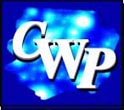Some Important Contributions
Discovered the chemical composition of stars and, in particular,
that hydrogen and helium are the most abundant elements in star
and, therefore, in the universe.
From the spectra of stars, she determined stellar temperature
and chemical abundances using the thermal ionization equation of Saha.
Her work was of fundamental importance in the development of the field
of stellar atmospheres. She discovered that all stars have very similar relative chemical abundances with hydrogen and helium comprising 99% by number.
Detailed study and analysis of the spectra of the difficult case of high luminosity stars.
Observations, with S. I. Gaposchkin, and analyses of variable stars laid the basis for all subsequent
work on them and their use as indicators of galactic structure.
Important studies of the spectra of galactic novae.
Some Important Publications
Books
Stellar atmospheres,
The Observatory, 1925; Harvard College Observatory,
Monographs, no. 1. This book is her
PH.D thesis which was submitted to Radcliffe College in 1925.
The stars of high luminosity, Published for The Observatory by
McGraw-Hill Book Company,
Inc., New York, London, 1930.
Variable stars, The Observatory, Cambridge, 1938.
Variable stars and galactic structure, University of London, Athlone Press, London, 1954.
The galactic novae, North-Holland Publishing Company: Interscience Publishers, New York,
1957.
Some popular texts
Stars in the making, Harvard University Press, Cambridge, 1952.
Stars and clusters, Harvard University Press, Cambrdige, 1979.
Honors
Henry Norris Russell Prize, American Astronomical Society 1976
-- This Prize
is awarded
"to commemorate a lifetime of pre-eminence in astronomical research and,
as such, is awarded to senior astronomers".
Elected member of Royal Astronomical Society while a student at Cambridge 1923
National Research Council Fellowship, Harvard College
Observatory
Member, American Astronomical Society 1924
Annie Jump Cannon Prize (first winner) 1934
Member, American Philosophical Society 1936
Member, American Academy of Arts and Sciences 1943
Award of Merit, Radcliffe College 1952
Rittenhouse Medal, Franklin Institute 1961
Planet 1974CA named in her honor in 1974 [1O N20]
Starred in American Men of Science [7 MWR1]
Honorary degrees (D. Sc.)
[1O N20]:
Wilson College 1942
Smith College 1943
Western College
1951
Colby College 1958
Women's Medical College of Philadelphia 1961
Jobs/Positions
1925-27 Research Fellow, Harvard College Observatory
1927-38 Technical Assistant to Harlow Shapley, Harvard College Observatory
1938-56 Phillips Astronomer, Harvard College Observatory
1956-60 Chair of the Department of Astronomy, Harvard University
1956-65 Professor of Astronomy, Harvard University
1966-79Emeritus Professor, Harvard University
1967-79 Member, Staff, Smithsonian Astrophysical Observatory
Education
Newnham College, Cambridge (completed studies) 1923
Ph.D. Radcliffe College (Harvard College Observatory) 1925
[1O N20], [1980A PT], [6A AMS], [6B AMS], [7 MWR1], [12D GKS], [15 PGA],
[17 MWR2],
[27 LDO], [33J LSG], [39G CBY], [51 MJB],
Recommended reading - obituary by Elske van Panhuys Smith
[1980A PT] .
 Additional Information/Comments Additional Information/Comments
Payne-Gaposchkin completed her studies at Cambridge but was not awarded a
degree as Cambridge did not grant women degrees at that time.[1O N20]
Harlow Shapley, the director of the Harvard College Observatory, began a graduate program in
astronomy. This was made possible by a fellowship to encourage women to study at the
Observatory. The first student was Adelaide Ames (1922). The second student wa
Payne-Gaposchkin (1923). [15A PGA]
In 1925, Payne-Gaposchkin was the first person to be awarded a doctorate from Harvard College
Observatory.
Payne-Gaposchkin's dissertation
was, according to Otto Struve and Velta Zeberg
"undoubtedly the most brilliant Ph.D. thesis ever written in astronomy." Astronomy of the 20th Century (New York: Macmillan, 1962): 220. [12D GKS]
By 1930, Payne-Gaposchkin earned only $2,300 a year. She served as a technical assistant to H.
Shapley, director of Harvard College Observatory, 1927 - 1938. [33P LSG]
Payne-Gaposchkin's work at Harvard College Observatory was unofficial and unacknowledged
until 1938 when she was granted the title of Astronomer. She later asked to have this title changed
to Phillips Astronomer. None of the courses she taught at Harvard were recorded in the catalogue
until 1945. [1O N20]
Payne-Gaposchkin was the first woman to chair
a department at Harvard. [1O N20]
Payne-Gaposchkin was married to astrophysicist, Serge Gaposchkin. They had three children -
Edward, Katherine and Peter. Her daughter remembers her as "...an inspired seamstress, an inventive knitter, and
a voracious reader."[7 MWR1]
"She was charming and
humorous", according to J. Greenstein who was Professor of Astronomy at
the California Institute of Technology.
[7 MWR1]
Payne-Gaposchkin helped forge a path for other women scientists because of her
struggle
against sex discrimination at Harvard College Observatory and by her example. [1O N20]
Field Editor: Professor Jean Turner
<Turner@bonnie.astro.ucla.edu>
|  Welcome
to CWP at UCLA
Welcome
to CWP at UCLA  Welcome
to CWP at UCLA
Welcome
to CWP at UCLA